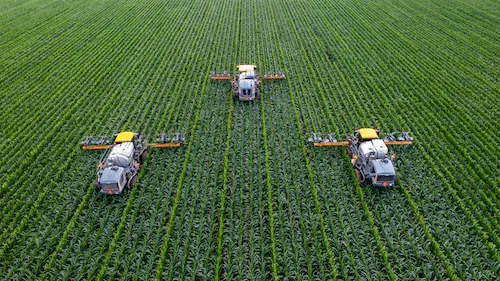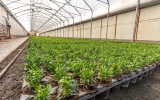What Is a Registered Smallholding? (How To Check)
When looking for an ideal property to start a small-scale farming venture or a self-sufficient lifestyle, one may come across the term "registered smallholding." In the UK, it typically means that the property has a County Parish Holding number (CPH), which registers the land for agricultural use and allows the owners to keep livestock. But what exactly is a registered smallholding, and how do you check whether you have one?
A registered smallholding is any piece of land officially registered with the local government or land registry. It is a small farm designated for small-scale agricultural activities that focus on producing food through various techniques. To check if one is registered, contact the local land registry or search their online databases.
Before purchasing a registered smallholding, it is essential to know how to check its status and comply with the necessary regulations. This includes verifying its planning category, checking whether the land is registered with the Land Registry, and ensuring that the land has a valid CPH number. Below, you'll find insider tips to help you make informed decisions about your smallholding lifestyle.
Summary
- A registered smallholding is a property that is registered with a local authority and is used primarily for agricultural purposes.
- It typically includes land, buildings, and other structures and is subject to specific rights and responsibilities.
- Many people add "registered smallholding" to property listings as it attracts more attention from potential buyers who are interested in smallholding activities.
- To check if a property is a registered smallholding, you must contact the local authority or look up the property on the Land Registry website.

On this page:
What Is a Registered Smallholding?
A registered smallholding often consists of a residential property situated within its land, which is larger than a garden but smaller than a farm. In the UK, the rule of thumb is that the land area of a smallholding should generally be less than 50 acres. There are specific regulations and guidelines for smallholding activities, referred to as Smallholding Planning Law, that ensure that they are constructed and managed responsibly.
One key aspect of a registered smallholding is the County Parish Holding (CPH) number assigned to the land, which comes into play in the United Kingdom. The CPH number primarily serves to register the land for agricultural use, allowing landowners to keep livestock legitimately and adhere to recognized standards of land use and management.

Registered smallholdings enjoy several benefits that unregistered ones do not have, such as security of tenure, access to funding opportunities, and the right to claim compensation. In addition, registered smallholders have the right to remain on their land, sublet or rent portions of it, access public services, and challenge decisions made by local authorities.
How to Check the Registration of a Smallholding
When researching the registration of a smallholding, there are several methods to explore. The most common approaches include utilizing online tools and websites or contacting local authorities. In this section, we will provide brief information on both approaches and offer helpful guidance to ensure accurate and efficient results.
It is important to thoroughly check the registration of a smallholding to ensure compliance with local regulations and secure essential permits. Explore both online resources and local authorities to obtain accurate registration information efficiently and reliably.
Online tools and websites to check smallholding registration
One of the most convenient ways to check the registration of a smallholding is through online tools and websites. These platforms often help you verify the registration status by providing information on the property's land registry, land area, and planning category.
Popular online resources to check the registration status of smallholdings include:
- UK Land Registry: This government site provides access to the land registry records of England and Wales, helping you check the registration details and titles of properties.
- Registers of Scotland: This Scottish government agency offers records of land and property titles in Scotland, assisting individuals in checking registration details.
- Land & Property Services (Northern Ireland): This website offers access to the land registry records for Northern Ireland, ensuring a comprehensive search for smallholding registration details.
Before initiating your search on these websites, ensure that you have pertinent information like the property address, postcode, or deed reference number.
Contacting local authorities to check smallholding registration
Another method to verify the registration of a smallholding is by reaching out to local authorities. These organizations often hold valuable information on registered properties in their jurisdiction, including land use policies and planning permissions.
Consider contacting the following types of authorities to inquire about smallholding registration:
- Planning departments within city or town councils
- Rural Payments Agency or any other relevant regulatory body
- Land registry departments within local government agencies
Provide the necessary details about the smallholding to facilitate the authorities' search, such as its location, the owner's name, or a neighboring property as a reference point.
Reasons for Registering a Smallholding
Registering a smallholding comes with several advantages for small-scale farmers and landowners, and they are as follows:
- A registered smallholding provides security of tenure. This security ensures that they have the right to remain on their land and can maintain their smallholding status, provided they follow the necessary regulations and guidelines.
- A registered smallholding also opens up opportunities for funding and compensation in certain situations.
- Registering a smallholding gives farmers the ability to rent or sublet the land. This can provide additional income or create opportunities for collaboration with other small-scale farmers.
- Having a registered smallholding attracts more attention from prospective buyers, which may prove beneficial if the owner decides to sell the property in the future.
- Registered smallholdings also have access to public services, such as technical assistance and financial support. These resources can help farmers improve their land management practices and overall productivity.
- The registration process allows smallholders to challenge any decisions made by local authorities that may affect their land or property rights.
- Registering a smallholding with the appropriate authorities, such as the United States Department of Agriculture (USDA) in the US, also ensures that the land is designated for agricultural use. This designation is crucial for keeping livestock and complying with land use regulations.
6 Helpful Tips for New Smallholders

As a new smallholder, it is essential to plan and establish a solid foundation for your smallholding. Starting a smallholding is a gradual process that requires time, dedication, and patience.
The following advice can help you navigate the early stages of setting up and managing your smallholding. By following these tips and suggestions, you can build a strong foundation for your smallholding and set yourself up for success.
- Research and education: Start by educating yourself on the various aspects of smallholdings, such as size and land use. Read books, attend workshops, or consult with experienced smallholders to gain knowledge and insight.
- Legal requirements: Ensure that your smallholding is legally registered if needed. This may involve obtaining a County Parish Holding (CPH) Number in the UK, which registers the land for agricultural use and allows the keeping of livestock.
- Land and resource management: Efficient land and resource management is crucial for successful smallholding. Create a plan that outlines your intentions for land use, livestock, crops, and woodland management.
- Crop and livestock selection: Choose crops and livestock that suit your land, climate, and intended purpose. Consider factors such as the initial cost, long-term maintenance, and market value of the chosen livestock and crops.
- Networking and community: Building relationships with other smallholders, local organizations, and suppliers can provide valuable support, knowledge, and resources. Joining a local smallholder group or online forums, such as The Accidental Smallholder, can be a great way to connect with others in the community.
- Financial planning: Establish a budget for your smallholding and monitor expenses regularly. This includes costs for land purchase or rental, livestock, equipment, and ongoing maintenance. Don't forget to factor in potential income from selling produce or livestock.



